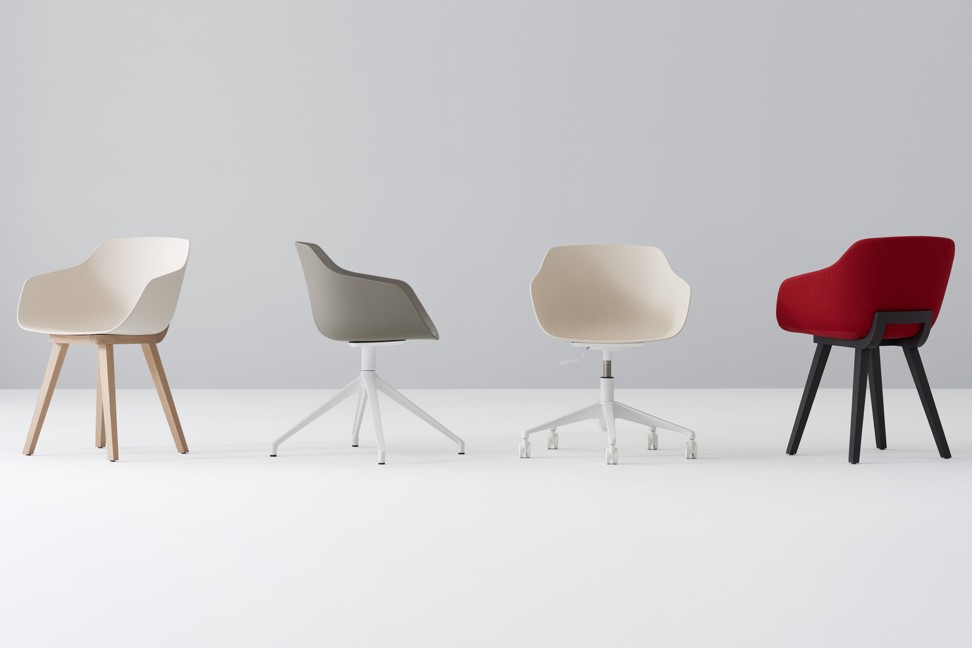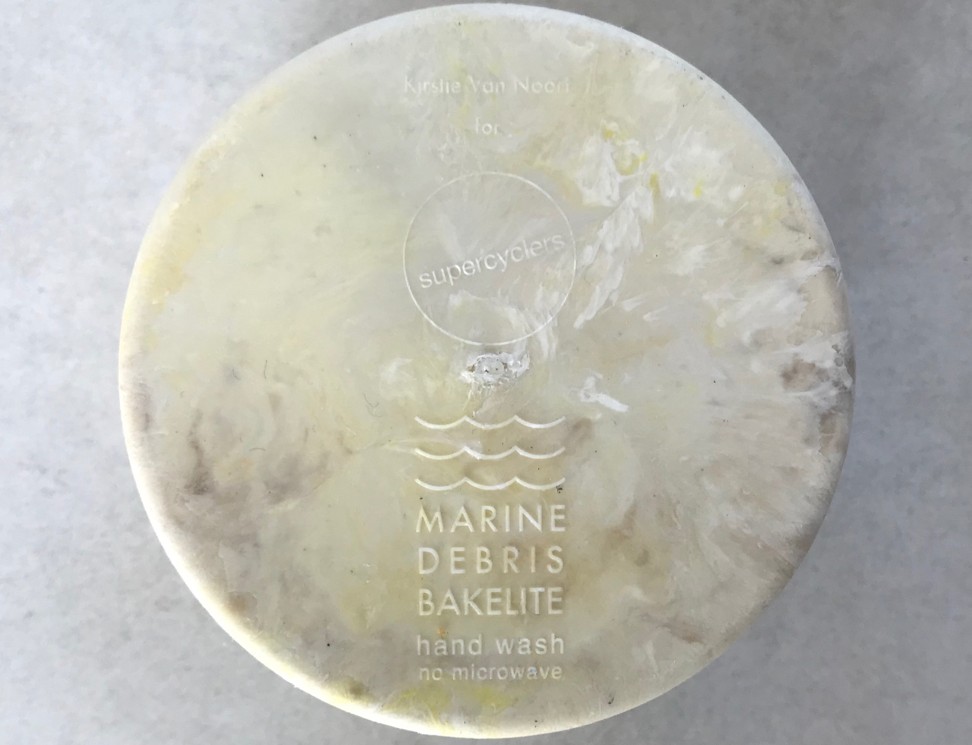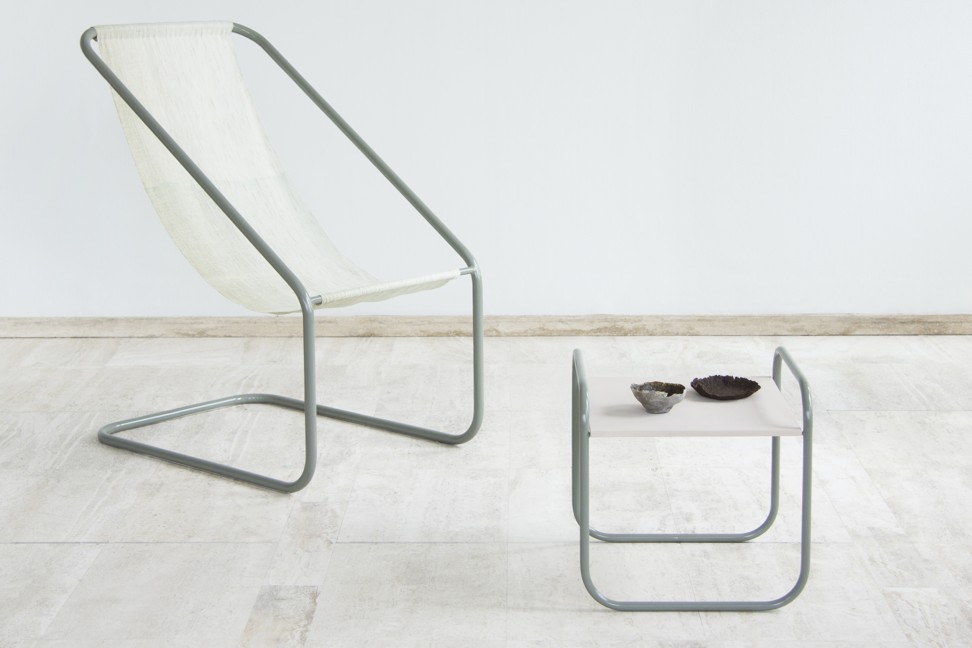
Plastic alternative bioplastic, made from vegetable oils, fats, fish scales, farm waste or other renewables, embraced by furniture designers
- A growing number of furniture and homeware designers are experimenting with bioplastic, a greener alternative made from renewable sources
- Vegetable fats and oils, corn or potato starch, algae, shrimp shells and other biomass are used to make a plastic-like material used in a variety of designs

Plastic, once the 20th century’s “wonder material”, has lost none of its usefulness. But it has become an environmental pariah, which is why a growing number of designers today are experimenting with bioplastic, a purportedly greener alternative made from renewable biomass such as vegetable fats and oils, corn or potato starch, seaweed, algae, shrimp, fish scales and even blood.
South Korean designer Jongdae Ryu is one. Not only does he produce furniture and homeware solely from bioplastic and/or other recycled materials, he employs 3D printing to further reduce waste during the production process.
Ryu explored his early interest in the medium and the technology during an artist-in-residence stint at Marunuma Art Park in Asaka, Japan, in 2017 because, he says, society “can’t keep using oil-based plastics which are destroying the earth”.
Ryu’s first collection of side tables using cornstarch as the base material was launched last year. Since then, the Seoul-based designer has added matching stools to his collection, as well as homeware such as vases and cups.

In contrast to plastics derived from petroleum hydrocarbon, which can take hundreds of years to break down – if at all – bioplastics made from plant-based polymers are ostensibly 100 per cent compostable and degrade in a few months at a composting facility. (It’s no silver bullet, though – if dumped at a landfill, bioplastics can still take centuries to decompose.)
Ryu uses polylactic acid, a material with characteristics similar to plastics derived from petroleum hydrocarbon, which he can 3D print into any desired shape, in a wide range of colours. He is now experimenting with different kinds of bioplastics, including one derived from shrimp shells.
He says plastic will remain popular with designers and consumers because of its strength, durability and malleability, but expects to see bioplastics being used widely across many industry sectors in the future.
We absolutely love our Bakelite, but plastic needs to evolve. Our premise for making objects this beautiful and keepable is that we don’t want to put anything back into the ocean
Italian furniture company Kartell has also developed a bioplastic version of its popular modular storage unit, Componibili, a design still in production since its first appearance at the Milan Furniture Fair in 1967.
The brand says the Componibili Bio, derived from agricultural production waste, is “completely recyclable and Greenguard certified for its low emissions”. The “fully sustainable” edition of this signature, three-module product is available in four colours: green, pink, taupe and yellow.
Doyens of design Charles and Ray Eames developed a plastic version of their moulded plywood chair, launched in 1950, but it would be another 65 years before the first bioplastic chair, by French brand Alki, hit the market. Since its debut in 2015, Alki has produced new versions of its comfortable and generously sized Kuskoa Bi, a shell-shaped chair designed to optimise back and arm support, placed on a solid wood trestle. The shell, still made from bioplastic, is available with the seat and/or inside back fully upholstered.

Meanwhile, the plastic that made history – Bakelite, the first fully synthetic plastic, invented in 1907 by Belgian-born American chemist Leo Baekeland – became largely obsolete as newer versions of the material were developed. Still, some can’t let go of their prized collections: never mind that Bakelite was made with formaldehyde, now known as a probable human carcinogen.
Australian designers Sarah K and Andrew Simpson were so enamoured of their respective stashes of vintage Bakelite that they named a line of environmentally friendlier homewares after it.
The Marine Debris Bakelite collection from Supercyclers.com, the Sydney-based business partners’ design collective, is made from 100 per cent recycled plastic collected from Australian beaches.
Though the collection has been called “the new Bakelite”, the only resemblance is in the name. Like Bakelite, says K, the range of tableware products and door handles has the look of the original material, along with a similar weight and density, but without the harmful chemicals – everything in the collection is coated in food safe wax resin.
“We absolutely love our Bakelite, but plastic needs to evolve,” K says. “Our premise for making objects this beautiful and keepable is that we don’t want to put anything back into the ocean.”
Material is only part of sustainability – you have to look at what it looks like up the chain, and down the chain, and then make an individual assessment based on its usage and volumes
Marine Debris Bakelite is just one experimental project undertaken by Supercylers. Simpson, an industrial designer, has researched bioplastics through his company Vert Design, a studio operating as a testing ground for new concepts, and he believes that, while meritorious, it’s not a panacea to the world’s environmental problems.
For a start, not all biopolymers (which bioplastics are made from) – or indeed traditional plastics – are created equal. “We’re hot and cold on biopolymers,” he says, “partly because the way in which they are made can be quite energy intensive.”
Considering the backstory to biopolymers – the resources and chemicals used to grow the agricultural products that are their base source, the freight involved in the transport and conversion process – Simpson says a bioplastic may have a worse environmental score than conventional plastic made from diesel, which is a waste product anyway.
He is more enthusiastic about another variation: bioplastic derived from animal blood. Simpson partnered with New Zealand company Bestaxx on a project which involved using blood from slaughtered animals in an abattoir to make bioplastic devices used to keep the carcasses hygienic.
They use the whole of the captured blood, which is dried and mixed with a plasticiser.
“This was a great use for biopolymer,” says Simpson. “But there was a poorer [market] take-up than we would have liked, based on price. You’re talking about a 12 cent product, compared to one that costs six cents.”

Another biopolymer with potential is derived from algae, he adds.
“The oils extracted from algae grow very fast, can be produced in a sustainable way, and the carbon dioxide from coal-fired power stations can be used to feed them,” he says. (Dutch designer Nienke Hoogvliet is one of the innovators in this space: her Sea Me collection of chair, table and bioplastic bowls made using a seaweed textile, launched in 2016, highlights its possibilities as a material.)
With bioplastics, Simpson says, each case may be different. “Material is only part of sustainability – you have to look at what it looks like up the chain, and down the chain, and then make an individual assessment based on its usage and volumes.”
Nevertheless, he is optimistic about its potential. “The Industry is working together to make it better, which is a positive progression,” he says.